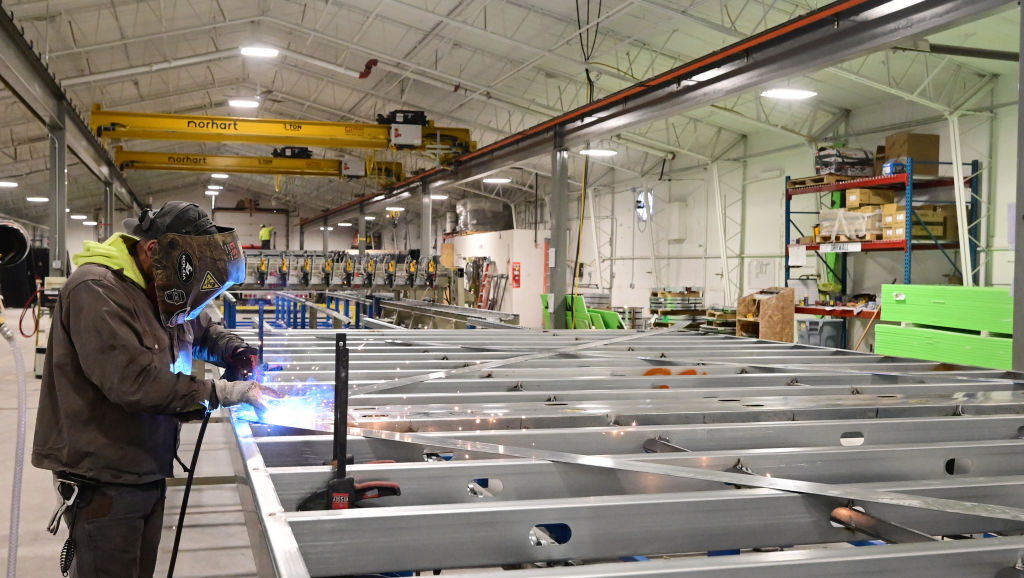
But some regions have fared better than others, the Economic Innovation Group reports. Still, factory investment in key sectors — and lower interest rates — should help create even more good manufacturing jobs in the years ahead.
The United States now has more jobs in the manufacturing sector than it did before the Covid-19 pandemic, an especially impressive feat considering it’s also the first time since the 1970s that the sector regained all of the jobs it lost during an economic recession.
But those job gains weren’t evenly distributed, as some regions fared better than others in attracting new factory jobs.
The Economic Innovation Group (EIG) recently examined factory job growth from 2019 to 2023. Manufacturing lost 650,000 jobs during the Covid-19 pandemic, but by the end of last year had gained all of those jobs back.
In fact, the country is now home to 12.9 million manufacturing jobs, up from 12.8 million in 2019. That’s still down from the 18 million or so jobs that existed at the sector’s height back in 1970, but with massive factories currently being built to make things like semiconductors, electric vehicles, batteries, and clean energy across the country, there’s reason to be optimistic that more job growth is on the horizon.
The new national manufacturing landscape, however, could wind up being different than in previous decades. EIG researchers found that some states have fared better than others in recent years when it comes to manufacturing job growth, and five accounted for nearly two-thirds of all growth since 2019.
Texas comes out on top, gaining nearly 50,000 manufacturing jobs from 2019-2023, a 5.5% boost. Florida is next with nearly 37,000 new factory jobs, followed by Georgia (20,303); Arizona (16,797); and Utah (15,990).
Meanwhile, 20 states still have not recovered factory jobs lost during the pandemic recession. Washington is still in a deficit of nearly 20,000 jobs, while New York is still missing more than 18,000. Industrial Heartland states also continue to struggle to regain lost factory jobs, with Ohio missing 13,441; Michigan missing 12,449; and Wisconsin with a deficit of nearly 9,000 jobs.
The types of places that are attracting manufacturing differs, too. EIG found that “the pandemic significantly reshaped the distribution of manufacturing job growth across different county types,” with rural areas losing factory jobs. Meanwhile, small urban counties — defined as cities of 50,000 to 100,000 people or a suburban/urban area of at least 50,000 people — saw big gains, accounting for 61% (!!!) of manufacturing job growth from 2019-2023.
Likewise, individual sectors have done better than others, with the food and beverage sector gaining the most jobs, followed by transportation equipment (not surprising, given the investments from 2021’s Bipartisan Infrastructure Law). The computer and electronics industry also recorded big gains, although there remain 39% fewer jobs in that sector compared to its height in 2000.
Some individual manufacturing sectors still have not gained back the jobs lost during the pandemic, including metals manufacturing, furniture, textiles, and paper and printing. Overall, manufacturing job growth still lagged behind the rest of the economy, the EIG researchers noted.
There is reason to be optimistic, however. As noted earlier, factory construction to make things like semiconductors is likely to add additional jobs, with massive factories in places like Ohio, Arizona, and Texas set to come online within the next few years. High interest rates also plagued factory job growth for much of this year, but lower rates should help ease some of that sluggishness.
The key, of course, will be seeing everything through. Over the past several years, the United States began implementing real industrial policy that has the potential to ensure we will lead the world in making the things we need for the future, whether that is high-tech electronics, the clean energy of the future, or whatever else lies ahead. Policymakers must continue to make critical investments in key sectors, and our leaders cannot hesitate to enforce our trade laws when bad actors seek to undermine our efforts.
If the United States gets the industrial policy right, more factory jobs will come.
